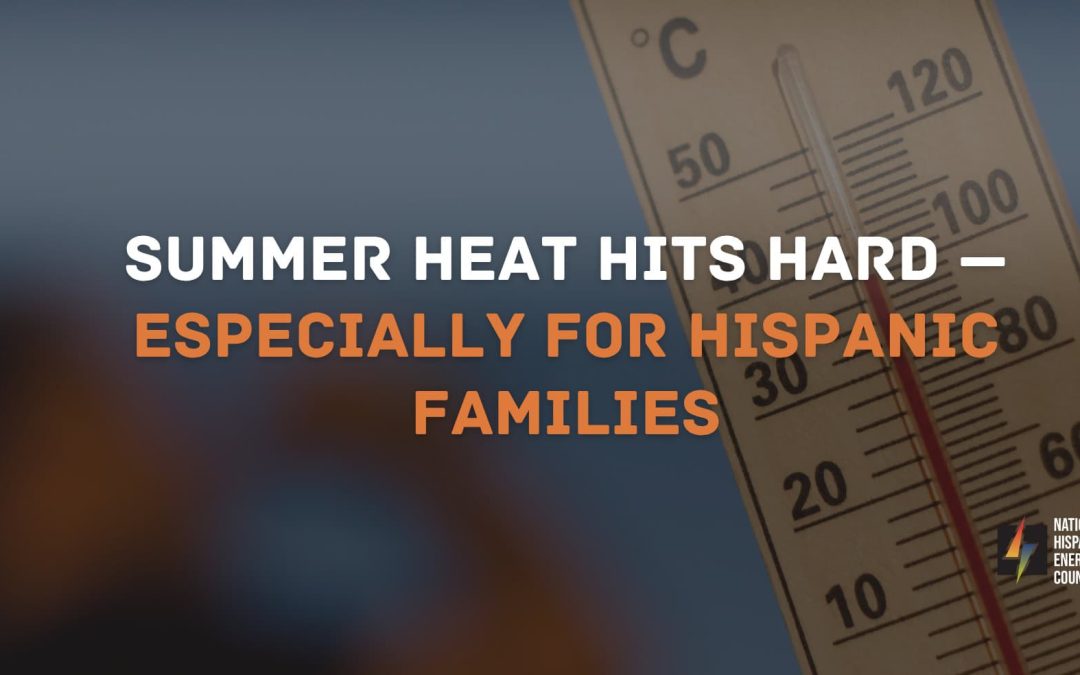Summertime is supposed to be an exciting time for families, a time to enjoy summer break, go on vacation, and enjoy quality time with loved ones. However, for many families, the summer can bring financial hardship due to higher utility bills. This can especially burden Hispanic families who spend a higher percentage of their income on energy bills and are geographically concentrated in states with high summer temperatures.
The Numbers Don’t Lie: Hispanic Households Are Hit Hardest
An assessment by the Federal Energy Regulatory Commission (FERC) found that this summer would bring higher temperatures than usual, increasing electricity demand and prices across the nation. Areas with higher-than-average temperatures include the states with the highest Hispanic populations, such as Texas, New Mexico, Nevada, California, and Florida.
Increased temperatures strain the electric grid and raise utility bills from air conditioning and overworking appliances, especially in older or larger homes. United for ALICE identifies households that are Asset-Limited, Income-Constrained, and Employed (ALICE). These homes are not identified below the Federal Poverty Level, but still struggle to meet basic needs. The most recent report in 2022 found that 66% of Hispanic children in the U.S. disproportionately live in homes within the ALICE threshold.
Hispanic families, who tend to pay over 20% more in energy costs than the median American family, are at a higher risk during the hot summer months. The ALICE data shows that these families are hard-working and still income-constrained, struggling to make ends meet for their children. Affordable energy bills during the summer months give these families more financial freedom to enjoy the summer break.
Energy Failures Aren’t Just Inconvenient, They’re Dangerous
Not only do the hot summer months raise prices, but there is also an increased risk of energy failures. This summer, New York City has already been hit with major power outages during a heatwave, leaving thousands of residents without power. Heat waves are not merely uncomfortable, but can be life-threatening, especially for those with preexisting health conditions.
Low-income neighborhoods are hit the hardest during energy failures due to older housing stock, poor insulation or a lack of backup systems. Health risks from heat are significantly higher for elderly individuals, and this risk is increased when homes are not properly weatherized. In the U.S., 17.1% of Hispanic individuals over the age of 65 are living in poverty, compared to the rate of 8.9% for all other Americans in the age group.
During the summer months, vulnerable communities with health risks or older homes face dangerous consequences from energy failures. Developing smart energy policies that prioritize these groups and making energy more reliable is the smart – and right – path forward.
Energy Policy Needs to Focus on Affordability and Reliability
As the nation faces a hot summer and rising energy demand, policymakers must recognize that energy policy is about helping people. Hispanic families, especially those in ALICE households, cannot afford unreliable power or unaffordable energy bills during the hottest months of the year. When the electric grid fails or energy prices spike, it’s not just an inconvenience; it’s a public health risk. Energy policy must prioritize both affordability and reliability to allow families to stay safe, cool, and financially secure this summer and future summers.
